Presentation
Abdominopelvic pain and progressive distension.
Patient Data
Age: 55 years
Gender: Female
From the case:
Ovarian serous cystadenocarcinoma
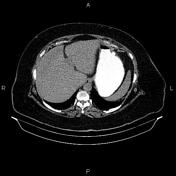

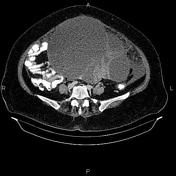

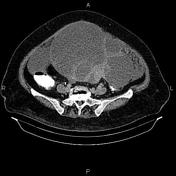



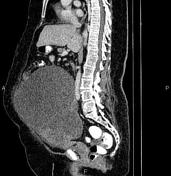

Download
Info
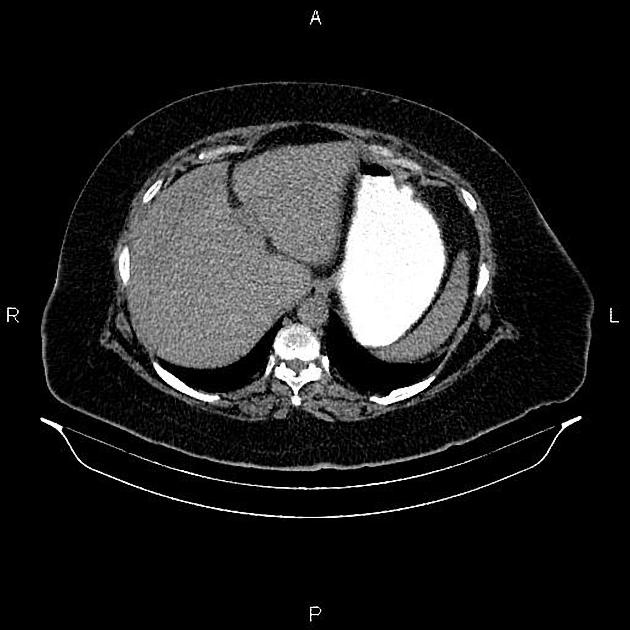
A 265×195×250 mm huge cystic solid mass arising from the pelvis and extends until the level of renal hilum. Additionally, some abdominopelvic free fluid and multiple soft tissue density omental masses, less than 40 mm are evident inferring tumoral seeding. The ovaries couldn’t be defined separate than mentioned mass.
Several tiny stones are seen within the gallbladder.
Case Discussion
Huge ovarian cystic solid mass; pathology proven ovarian serous cystadenocarcinoma with abdominopelvic ascites and peritoneal tumoral deposits.




 Unable to process the form. Check for errors and try again.
Unable to process the form. Check for errors and try again.